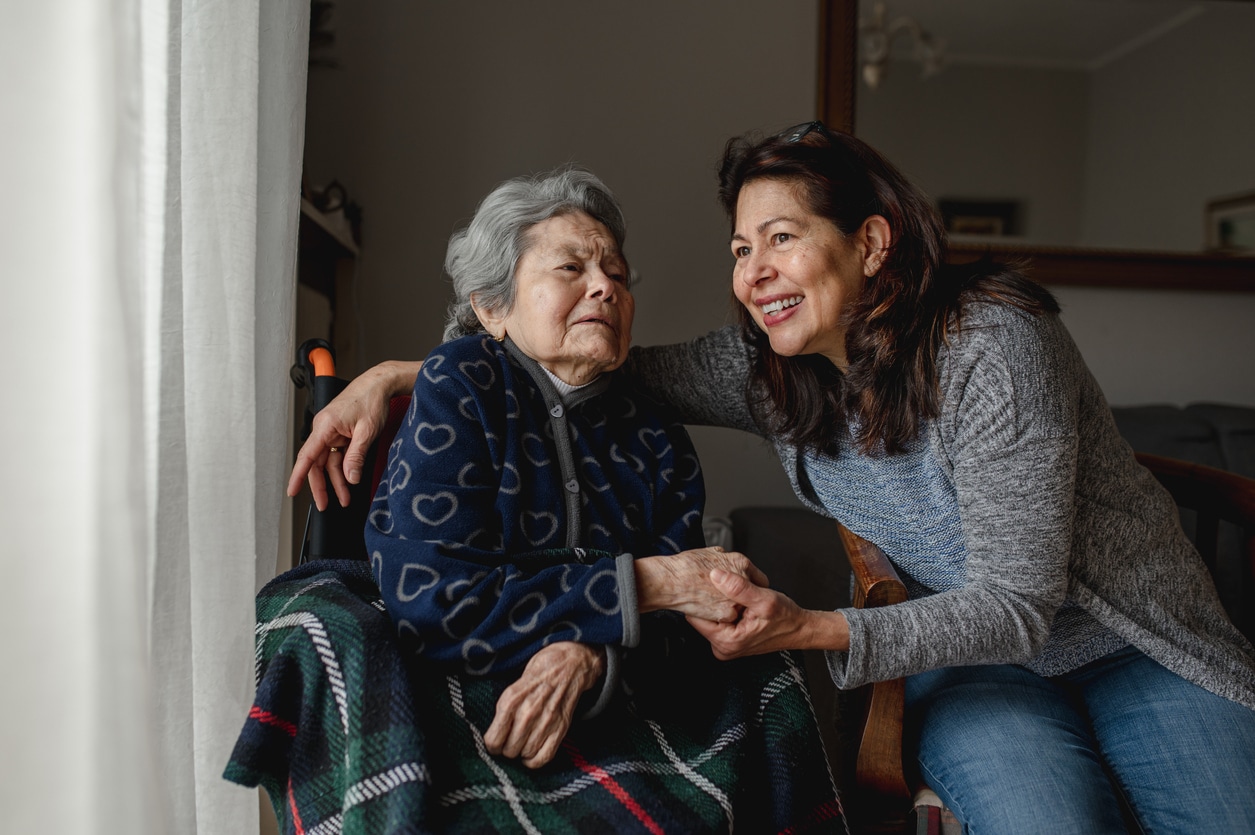Being a family caregiver is a challenging role, and it often falls on the shoulders of an adult child who already has a lot on her plate. Though the numbers vary depending on the source, it’s estimated that there are 34 to 50 million family caregivers caring primarily for aging parents in the United States. According to the Centers for Disease Control and Prevention, the average caregiver spends at least 20 hours per week providing some kind of care, whether hands-on physical care or emotional support. Add that to the typical 40 hours a full-time employee works per week, the responsibilities of raising a family, and maintaining a relationship with a spouse or partner, and a caregiver will find there’s little time for anything else. As families explore their options in terms of how care for an aging parent will be provided, the option of bringing their parent to live with them often comes up for consideration.
As a professional guiding these family caregivers to find the best solutions for their particular situation, some things are important to encourage them to consider. Bringing an elder parent to live with the caregiver family can and has worked very well for many families over time, but it should not be entered into without considering all the possibilities. What sounds like a great idea on the surface can put tremendous pressure on families and relationships if the plan is not well-thought-out. As the trusted professional, you can be an objective party pointing out both the pros and the cons so they’re able to make an educated decision.
One of the advantages of having aging parents move in is that the hands-on caregiver does not have to spend time away from home driving to and from visits to his parents’ house. It can also spread the burden out among other family members in the household — even teenagers and children can play a part in helping to take care of someone in their own way. Giving grandchildren access to their grandparents on a daily basis can also be a wonderful benefit of a live-in care situation.
Some Things to Encourage Families to Consider:
Is Everyone on Board With the Decision?
If both partners and children living in the home are not in agreement that this arrangement is in everyone’s best interest, it can be a setup for disaster. It’s extremely important to encourage the family to discuss all the pros and cons with each other and make sure that everyone knows what will be expected of them and how the existing family structure might change. You might also encourage that they involve a skilled facilitator to make sure that everyone feels heard and that all angles are considered with this very important decision.
Are They Willing to Do This Indefinitely?
Often families think that they will only need this living situation for a couple of years and then feel trapped when five years later the needs of the aging parents have increased and the family caregivers are worn out. Helping the family understand the long-term impact and what might need to be done if they need to make changes after the plan has been put in place will help them think it through more thoroughly.
Understanding the Financial Resources and Implications
Some families combine the resources of the two households to accommodate the additional expenses of the move, any renovations or modifications that need to be made or to help pay for additional care. Encourage families to be completely open and get all the information from everyone involved so that every family member understands the financial situation before making this move. If the aging parents are relying solely on Social Security and there are no assets, it’s possible that much of their income goes toward medications or basic needs, and they may not have much left to contribute to the new household. If there is money available, but the aging parents are reluctant to spend it, it’s important to have conversations upfront about who’s going to pay for what. If possible, build in the option to hire additional help when it’s needed and be clear about who will be paying for that.
Is Dementia a Factor?
Many family caregivers do not realize that any kind of change in living environment can create a decline in cognition for seniors with dementia. Helping families understand this and plan for future needs, rather than current needs, can help set them up for a more successful situation.
It can also be helpful to encourage any family member who might be involved in the home situation to educate herself about dementia and how it can impact an individual over time. Guiding the family to some of the great resources available to help people learn more about the illness — including support groups and classes through the Alzheimer’s Association, books specifically designed to help kids understand dementia, and books to help adults understand dementia — can help arm everyone with a better understanding of what’s coming and the right tools to handle it.
Caregiver Self-Care
As professionals, we see burned-out family caregivers who have their own health-related issues because they’ve neglected their own care. Helping caregivers set up a plan that includes self-care is an extremely important part of the guidance that they need from a trusted professional. Encourage them to make sure they schedule time away for the whole family as well as create a plan for backup care, whether that means asking a family member who is not part of the household to provide relief or following your recommendation for a trusted private duty home care provider.
Shared Care
Some of the best care situations for aging parents can involve a shared care situation, where they go live with one side of the family for a few months and then another side of the family for a few months. This gives the aging parent(s) the opportunity to spend time with each of their children and grandchildren and also provides each family with some time away from daily care. There are some limitations to this option, particularly if one or both of the parents has advanced dementia, but it’s been done successfully in many families. Sometimes just suggesting shared care as an option can open up the family to considering it.
Helping Out
As an objective observer, you might want to suggest that this process be a two-way street. Most people want to feel useful and participate in their families, so encourage the family to consider not only what they’ll be providing for the elder parent, but how the parent(s) can participate in the family as well. Even if the elder parents will be contributing financially to the household as part of this arrangement, they might consider whether there are other things they can do to contribute. Some options can include helping grandkids with homework, being there when they get home from school, or helping with meal prep or household chores. This will, of course, depend on the health of the parents, but feeling that they’re contributing to the family can be beneficial for both sides.
Physical Considerations
If you’re familiar with the needs and limitations of the aging parent, it can be helpful to point out issues that may be easy for the family to overlook. For example, if the parent cannot navigate stairs easily, the family should consider having a main-level bedroom available.
Some families already have homes that include an in-law apartment. When this is not the case, they may want to consider investing some of the money saved for a retirement community or from the proceeds of the sale of the seniors’ home in building or renovating the family home to include an in-law apartment. Encouraging them to include safety and accessibility features like wide doorways, grab bars in the bathrooms, and electronic safety devices can help them prepare for the future needs of the aging parent.
Backyard Pods
Another option that has come on the market in the past few years is the backyard pod. Backyard pods are portable units that can be designed to accommodate the living space of one or two people. There are even units specifically designed for an aging adult, complete with all the safety features you would expect to find in an assisted living apartment. Many things need to be considered with this option, including zoning, space, and cost — the units can cost up to $100,000 — but this could pay for itself if you compare it to more than two years in a $4,000/month assisted living community.
Put It in Writing
Encourage the family to document what they are planning and how the plan will work. Sometimes this can work better if it is facilitated by a therapist or geriatric care manager. Getting a referral to a resource from a trusted professional will help them understand that they are not alone in their situation and become open to accepting some professional assistance.
When you’re a professional involved in the overall care of someone’s aging parent, offering your objective viewpoint, referrals, and advice, when the family is considering having their parent move into the family home, can help set the situation up for success for everyone.




